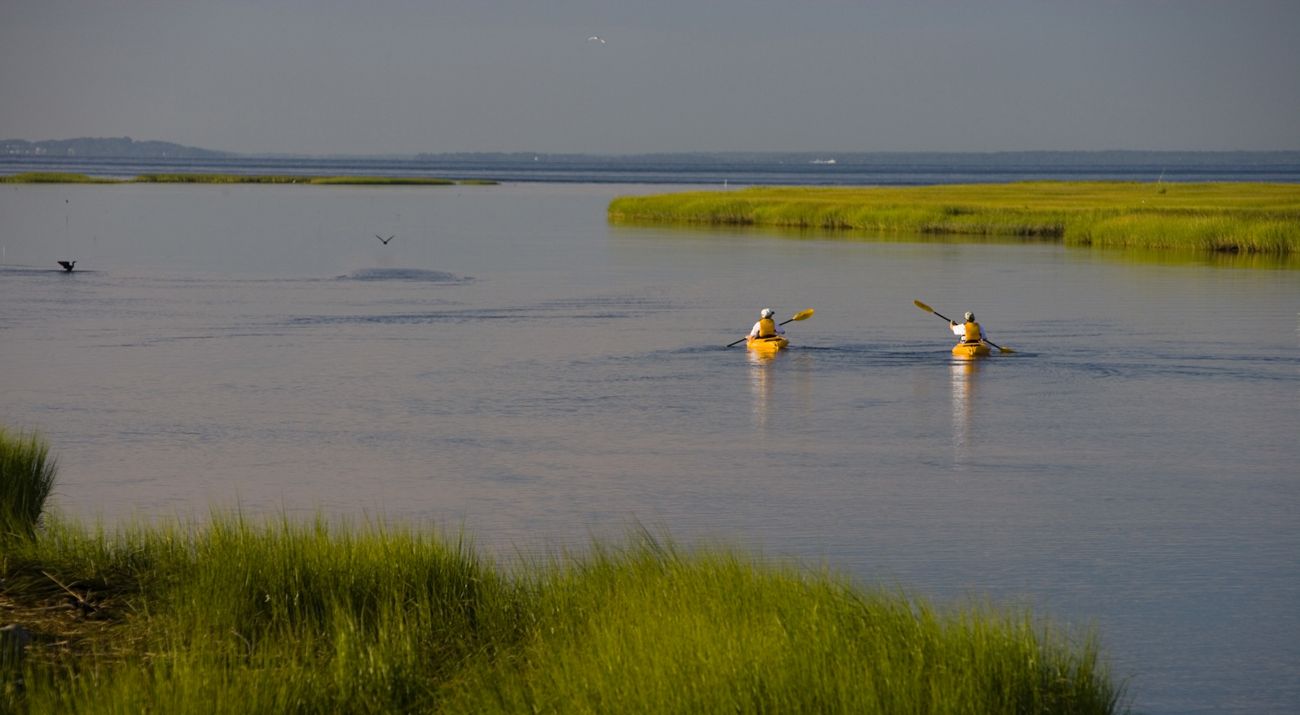
Welcome to our Conservation Newsroom. We hope you'll visit often to stay informed about conservation projects and big wins that we are reporting on from around Connecticut. Thanks for reading!
March 2025
Looking back on 2024, we are inspired by the conservation and community impact The Nature Conservancy made with the help of supporters like you. We secured grants for environmental work implemented by TNC and our partners, including projects like the Bride Brook Estuary Transformation Project and a study on wildlife crossings in the state.
In Bridgeport, our Urban Conservation team distributed 34 outdoor backpacks, filled with fun tools to help students explore and learn about the outdoors. The team also supported a community partner in planting 15 new trees.
We also organized and ran Community Resilience Building workshops in more Connecticut municipalities, bringing the total of participating municipalities to 59, benefitting 1.8 million people and unlocking more than $8 million in state funding for communities.
And TNC provided financial support for partners to protect 162 acres of valuable natural habitat in addition to stewarding 32,000 acres of TNC preserves and easements. This work would not be possible without the 84 volunteers who supported various projects over the course of the year, totaling in 776 hours of volunteer work.

Learn More
-
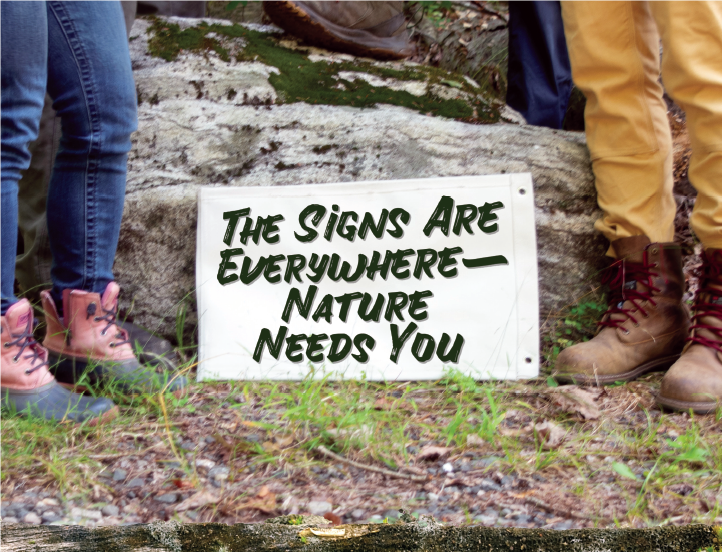
Annual Report
The Nature Conservancy's 2024 annual report shares the status of conservation projects around Connecticut. Read our 2024 Annual Report

November 2025
Holiday Buoys Celebrate Nature’s Resilience
This holiday season, we're excited to join the beloved Lobster Trap Tree tradition in Stonington and Milford—two coastal communities where conservation and creativity come together.
The “trees” are built with stacked lobster traps, and buoys hang from every inch—including two buoys painted by a TNC team member.
Our Stonington buoy celebrates the beauty and resilience of salt marsh ecosystems—critical habitats that filter water, buffer communities from flooding, store carbon and provide nursery grounds for fisheries. The design brings this vibrant world to life:
- A fiddler crab scuttling along the shore
- An osprey clutching its catch
- A great egret wading in the shallows
- Alewife swimming upstream
- Native flora like purple milkwort and swamp aster
These species remind us why our work restoring tidal connectivity at Rocky Neck State Park matters, from healthy coastlines and thriving wildlife.
Our Milford buoy celebrates native trees that cool neighborhoods, improve air quality and support wildlife. It showcases five iconic species: tulip tree, pin oak, eastern redbud, shadblow serviceberry and flowering dogwood.
Every buoy tells a story of resilience—whether along our coastlines or in our cities.
👉 Visit the Lobster Trap Trees and see these designs up close!

September 2025
Pollinator Poll 2025: Who Have You Seen?
As summer fades and fall approaches, pollinator activity begins to slow—but their impact is still buzzing. Have you spotted a bee, butterfly or hummingbird lately?
These small but mighty creatures play a big role in helping plants grow, reproduce and thrive—from your backyard garden to wildflower meadows across Connecticut. Join our Pollinator Watch by sharing sightings of the pollinators that keep our landscapes blooming.
Pollinators fertilize over 75% of flowering plants and crops. Want to support them year-round?
🌼 Plant native flowers like milkweed, bee balm and goldenrod.
🚫 Avoid pesticides, especially during blooming seasons.
🐝 Provide shelter with brush piles, bare soil patches, or bee hotels.
💧 Offer water in shallow dishes with stones for landing.
As the season winds down, let’s celebrate the pollinators who’ve helped Connecticut bloom—and keep working to protect them.
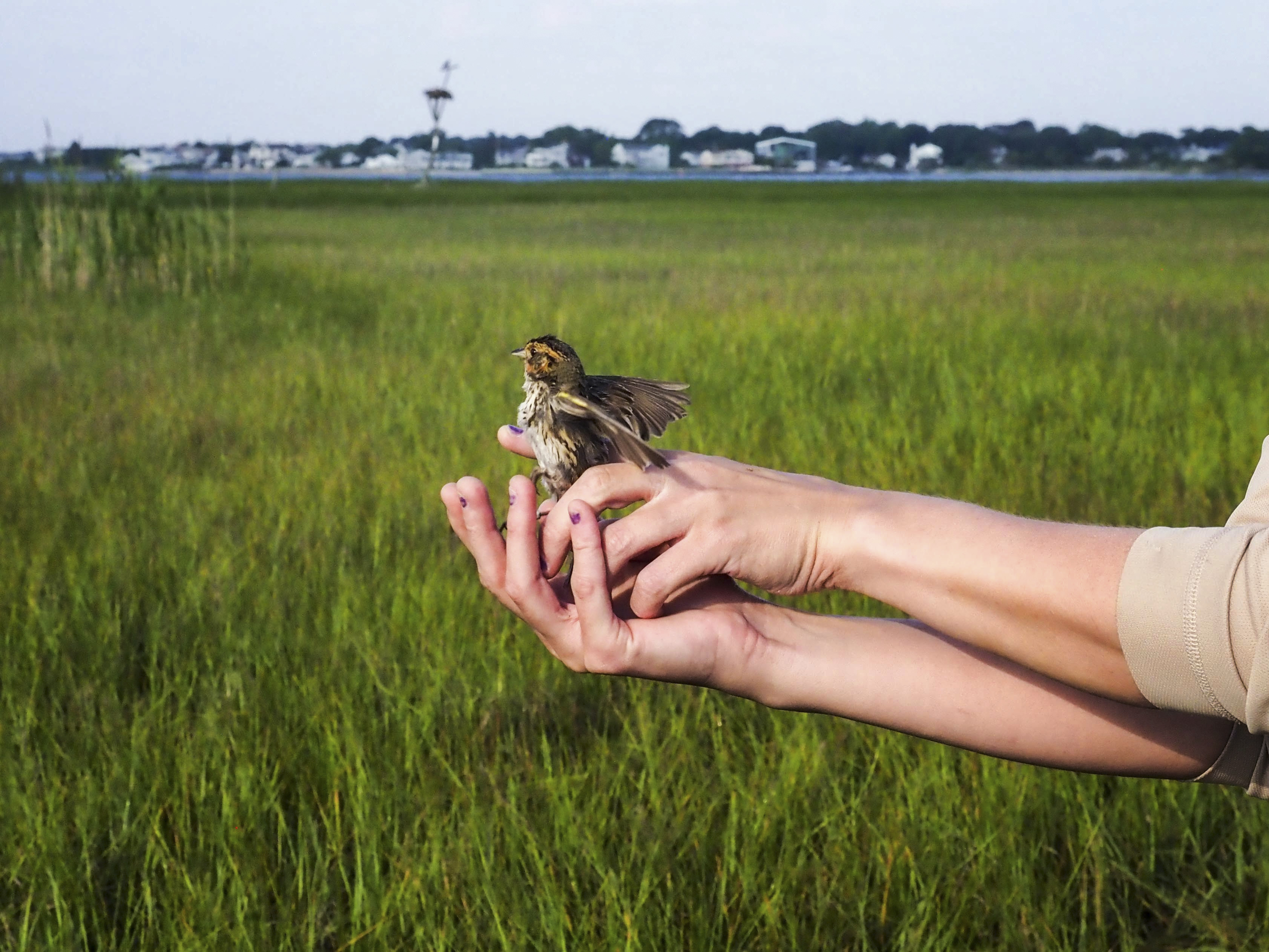
June 2025
Protecting Wildlife Through Habitat Support
Connecticut is home to some incredible—and often threatened—wildlife.
Did you know….the state lists more than 200 species of plants, animals and insects as endangered? Dr. Jessica Cañizares, director of coastal ecosystem projects for The Nature Conservancy in Connecticut, recently spoke with the New London Day about work to support these species and the habitats they depend on. TNC’s project at Rocky Neck State Park is one important example.
From butterflies and birds to coastal plants and forest dwellers, many species are now endangered due to habitat degradation and other environmental pressures. Cañizares explained how long-term efforts are necessary to conserve these threatened habitats.
“If you're trying to protect a salt marsh sparrow or you're trying to protect a whole marsh, either way, the ecosystem needs to be protected because it does more than just [protect] the species — it affects our lives in so many ways that people are not aware of.”
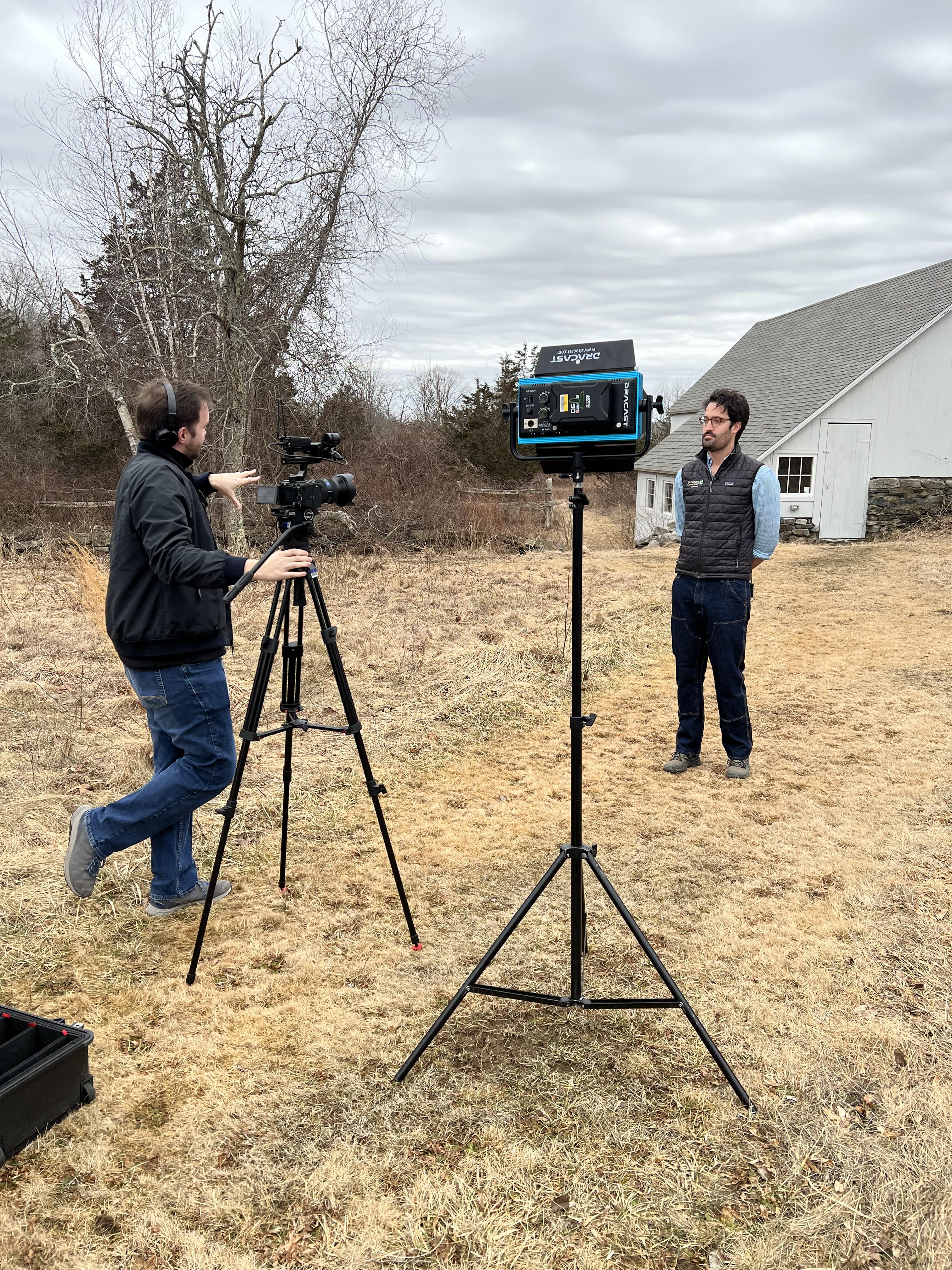
March 2025
Bees, Beavers and Oysters…Oh My!
All three critters can be found in Connecticut and staff from The Nature Conservancy shared lots of fun facts in a recent Kids Connection show with NBC CT.
“Bees are our friends!” Melissa DeFrancesco, watershed conservation coordinator for TNC in CT, reminded everyone who tuned in. “We don’t have to be afraid of them. If we see bees when we’re outside, they’re likely looking for plants to pollinate to help flowers and vegetables grow.”
Land Steward Kieran Runne described dams and lodges built by beavers, saying they’re “architects” out in nature, and noted that they have favorite trees to chomp—just like humans have favorite foods.
Tim Clark, TNC's Resilient Southeast Connecticut Project Director, discussed the importance of oysters for water quality, the shoreline ecosystem and our state’s economy, noting that while oysters might be small, they are still powerful.
Learn more about bees, beavers and oysters, and how TNC is working to protect their habitats.
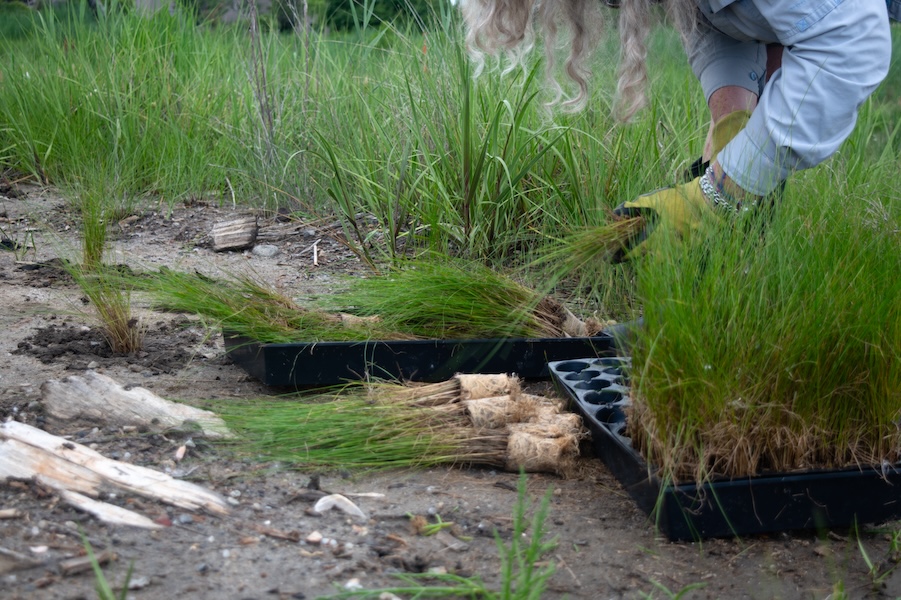
July 2024
Great Meadows Marsh has attracted an army of local supporters over the past century.
Back in the 1920s, Roger Tory Peterson and other prominent ornithologists living in the New York City area would take the train out to Stratford to visit what they considered one of the best birding sites in the Northeast. Later in the 1960s, when a developer proposed turning the area into a major deepwater port, the Connecticut legislature responded with the passage of the laws to protect these tidal wetlands. In the 1990s, a bipartisan group of legislators—including Rosa DeLauro, Chris Shays and Joe Lieberman—urged by thousands of conservationists around the state, secured more than $12 million to add the Great Meadows Marsh to the Stewart B. McKinney National Wildlife Refuge.
More recently, in 2020, Audubon Connecticut, the National Oceanic and Atmospheric Administration, the Connecticut Department of Energy and Environmental Protection and the U.S. Fish and Wildlife Service broke ground on a restoration project at the marsh, now a Globally Important Bird Area. The Nature Conservancy was one of many supporters that raised $3.07 million in additional funding for the project to restore 33 acres of Stratford salt marsh.
Great Meadows Marsh contains the largest block of un-ditched salt marsh remaining in Connecticut. The rare snowy owl can be seen in this special place and it is also an important habitat for horseshoe crabs and blue crabs, the endangered marsh pink flower, saltmarsh sparrow and other migratory animals like striped bass. However, this unique habitat faces numerous threats today. Along with losing 700 acres of the marsh, dredging, non-native plants and rising sea levels have degraded the marsh. In response, TNC's Volunteer Coordinator in Connecticut, Martha Rice, works with Connecticut Audubon to coordinate volunteers who plant native grasses and shrubs during at the restoration site.
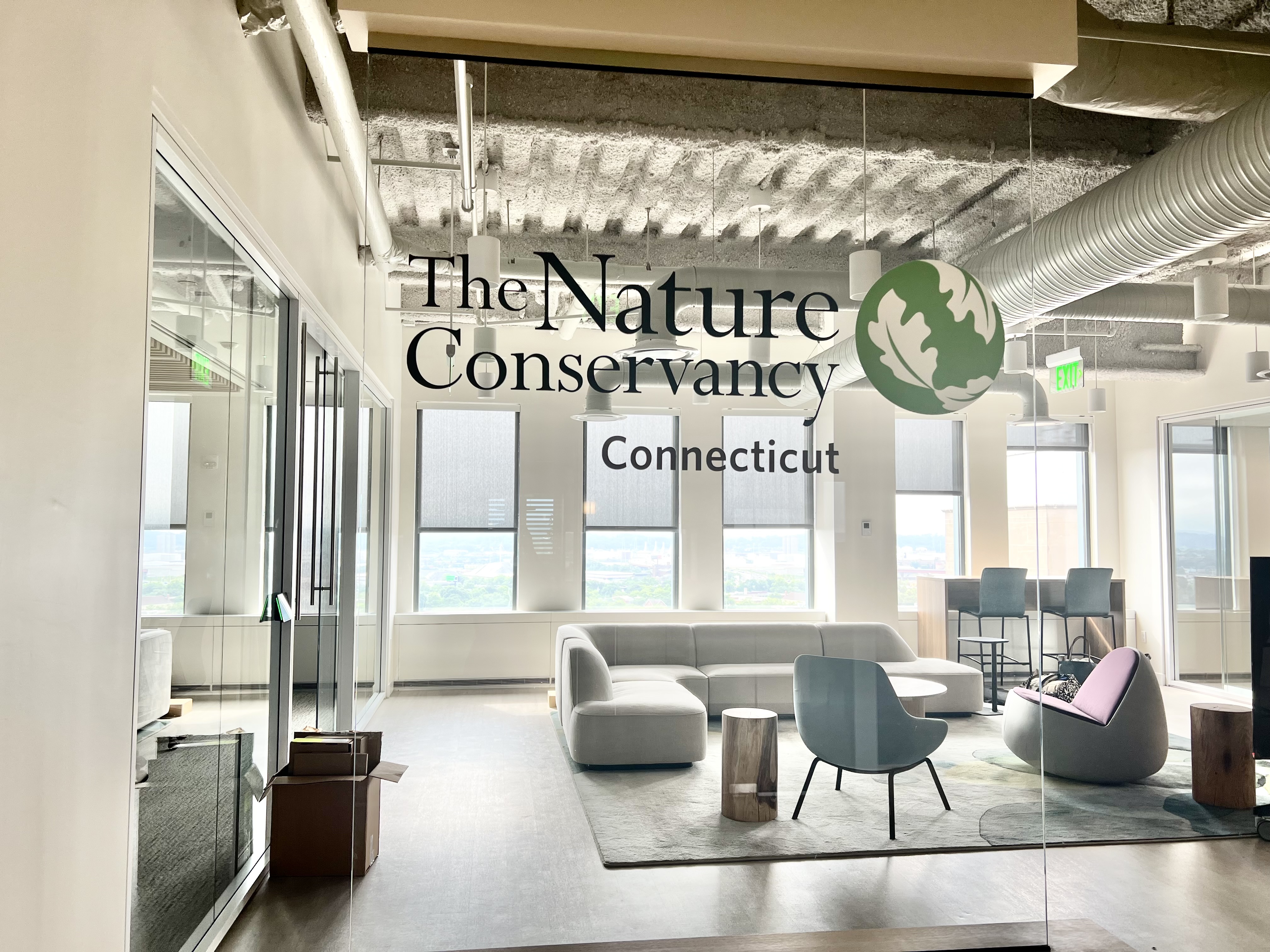
July 2024
On the Move!
The Nature Conservancy is turning over a new leaf in Connecticut! After 16 years at 55 Church Street in New Haven, we have moved down the street to the 16th floor of the One Century Tower at 265 Church Street.
Our team is pleased to remain in downtown New Haven, where we have long partnered with Yale University and its students, conducted work focused on the nearby Long Island Sound, expanded an urban conservation program, collaborated with local nonprofit organizations and much more. New Haven also provides a centralized location, as TNC’s work spreads throughout the state to conserve 50+ preserves, 80+ easements, and carry out freshwater and coastal work. Access to train stations and public transportation is an additional benefit, and staff who live nearby enjoy biking to the office.
While this was a team effort, a special shout-out goes to TNC volunteer Jane Aldieri, who was instrumental in so many ways, including finding new homes for furniture that was no longer needed! The new space features a smaller footprint, more collaborative workspace, and recycled materials from a past building tenant.
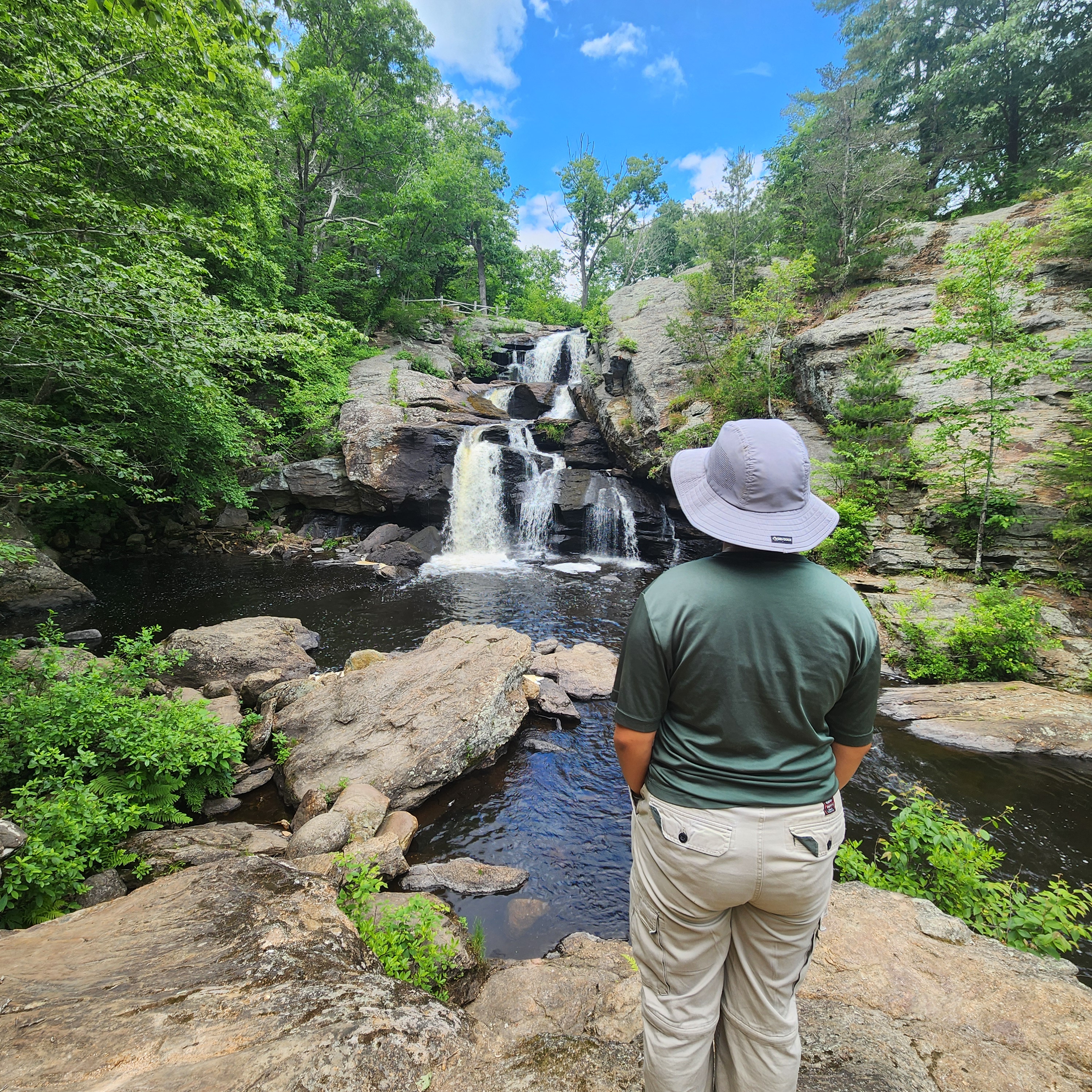
November 2024
Welcoming New Conservation Fellows
Students Logan Torres and Nisi Tuitupou, who were our Yale Conservation Scholars last year, have joined as Connecticut Board of Trustee Fellows with The Nature Conservancy. Their roles are part of the fellows program, which aims to provide professional development and fresh perspectives from emerging conservation leaders.
Logan Torres, originally from Pewaukee, Wisconsin, recently graduated from Brown University with degrees in environmental studies and political science. He is now pursuing a master’s in environmental management at Yale University. Logan's favorite part of Connecticut is the plethora of waterfront beaches where he enjoys kayaking.
Nisi Tuitupou, from Gardena, California, is a student at Bowdoin College in Maine where she is focusing on environmental science, history and chemistry, and recently studied under renowned marine biologist Dr. Ayana Elizabeth Johnson. She loves the abundance of trees in Connecticut, which she finds makes the state incredibly beautiful.
TNC’s Board Fellows Program provides students with the opportunity to serve in a non-voting capacity on the Connecticut Board of Trustees. It is designed to inspire and excite the next generation of conservation leaders by offering mutual learning experiences among staff, trustees and fellows. It also allows fellows to contribute valuable insights on TNC programs and outreach, particularly in environmental research.
Logan and Nisi join existing board fellow Tessa Hospod, an environmental science student at the University of Connecticut. Her work at UConn and with TNC was recently profiled in The Daily Campus.

November 2024
Tidings and Buoys
It’s one of the most wonderful times of the year, full of celebration and traditions—like the lobster trap trees made of buoys in two local towns. This year, The Nature Conservancy contributed buoys that will be hanging on the Stonington Lobster Trap Tree and the Milford Holiday Buoy Tree. The bouys were painted by Tebben Gill Lopez, TNC's marketing and communications manager in Connecticut.
The “trees” in Stonington and Milford are built with stacked lobster traps, and buoys hang from every inch. We love that they represent our beautiful Connecticut coastline, our local marine life and ecosystem, and the ways they all contribute to our state. They also represent an opportunity to highlight the importance of removing lobster traps from the water once they’re no longer being used, to protect Long Island Sound and marine life.

Stonington Buoy
The Biodiversity Buoy is decorating Stonington’s tree, depicting essential pollinators and pollinator plants native to our state. Pollination is important for a strong, healthy ecosystem. Most food for humans comes from flowering plants, and more than 80% of flowering plants need pollination.

Milford Buoy
The Reconnected Waterways Buoy will hang on Milford’s tree, highlighting the importance of migratory fish like alewife, as well as mollusks like clams and oysters, to Connecticut’s waterways. These species play a crucial role in our aquatic ecosystems, serving as a vital food source for many predators and helping to maintain the health of our rivers and streams. They also improve water quality and contribute to healthier and more resilient marine environments.

October 2025
Advocacy Day on Capitol Hill
Ready to advocate for essential legislation and funding opportunities, The Nature Conservancy in Connecticut joined hundreds of other TNC representatives in meeting with legislators for Advocacy Day on Capitol Hill in October.
A group of 10 CT staff members, trustees and Yale Conservation Scholars visited the Washington, D.C., offices of Rep. John Larson, Rep. Joe Courtney, Sen. Richard Blumenthal, Sen. Chris Murphy, Rep. Rosa DeLauro and Rep. Jim Himes. A later meeting will be held with Rep. Jahana Hayes. Overall, TNC held 240 meetings with representatives from all 50 states.
TNC in CT updated legislators and staff on current and future projects and funding while offering an expert voice on the impact of federal policy. But one theme echoed throughout—work supporting nature is deeply connected to people and communities. Trees and green space even translate to better health for residents, said Yale Conservation Scholar Corey Huebner, who’s worked with TNC and fellow scholar Skyler Nix on urban forestry efforts.
“We need to look at nature just like we do infrastructure and buildings, as physical lasting structures that span generations and provide benefits to the community,” Nix added.
Trustee Keitha Kinne expressed gratitude to CT’s delegation for efforts toward Long Island Sound, noting that progress is evident in many ways—like seeing dolphins in the Sound this summer, as supporter Peter Harned shared. Trustee Darin Latimore noted the connection between nature and local economies, while Trustee Eunice Burnett discussed permitting for energy infrastructure.
The team also advocated for continued support and funding toward Rocky Neck State Park, the Appalachians, land protection, clean energy, wildlife corridors, important ecosystems, urban conservation and nature-based solutions.

June 2025
At a Glance: Connecticut's 2025 Legislative Session
After multiple years of advocacy work by The Nature Conservancy’s team and community partners, a priority bill with major climate mitigation provisions passed on the last day of this year’s legislative session. TNC advocated for this bill with testimony, and by meeting with legislators, fellow advocates and business leaders.
The bill includes provisions on:
- Updating key climate goals for Connecticut
- Supporting more renewable energy such as solar canopies
- Providing more opportunities for energy efficiency programs
- Advancing heat pumps, especially for residents, schools and state buildings
This bill will ensure protection of the state’s environment while providing for the development of renewable energy sources and related job sectors in a manner that reduces costs connected with such protections and development.
This year, TNC testified on over 30 different bills concerning climate, energy, community resilience planning and conservation.

October 2024
Offshore Wind Energy 101
Did you know the world’s largest offshore wind farm can power over a million homes? Offshore wind energy is transforming the global energy landscape, and Connecticut has a big opportunity to join in—if we act now.
This affordable, long-term energy source offers a sustainable alternative to fossil fuels. It’s essential for tackling climate change in the Northeast, potentially reducing annual CO2 emissions by 42%. This translates to $362 million in annual public health benefits from avoided pollution.
Have questions about costs and impacts? Here are three key facts about offshore wind energy:
- Cost-Effective Energy: Offshore wind can hold the line on energy bills despite initial construction costs. Advances in technology, economies of scale, and wind as a free energy source make it competitive with traditional sources. Despite potentially higher “list prices” (quoted cost per kilowatt hour) the way offshore wind affects energy markets means offshore wind can actually help hold the line on electric bill costs. More energy options can also mean lower costs overall. See a study on this topic by research firm Synapse.
- Stable Prices: Offshore wind is a secure, local energy source, especially during winter. New England currently relies on a volatile global market for oil and gas. To prevent winter energy shortfalls, New England subsidizes oil and gas, costing rate-payers hundreds of millions annually.
- Infrastructure Upgrade: Electricity demand will double by 2050. Offshore wind can play a major role in meeting this demand, mitigating the need for new, costly, and polluting fossil fuel infrastructure upgrades and/or power plants.
The cost of inaction is high. Building offshore wind now will save New England money by 2030. Offshore wind is an investment in our future—for nature, and for people today and generations to come.
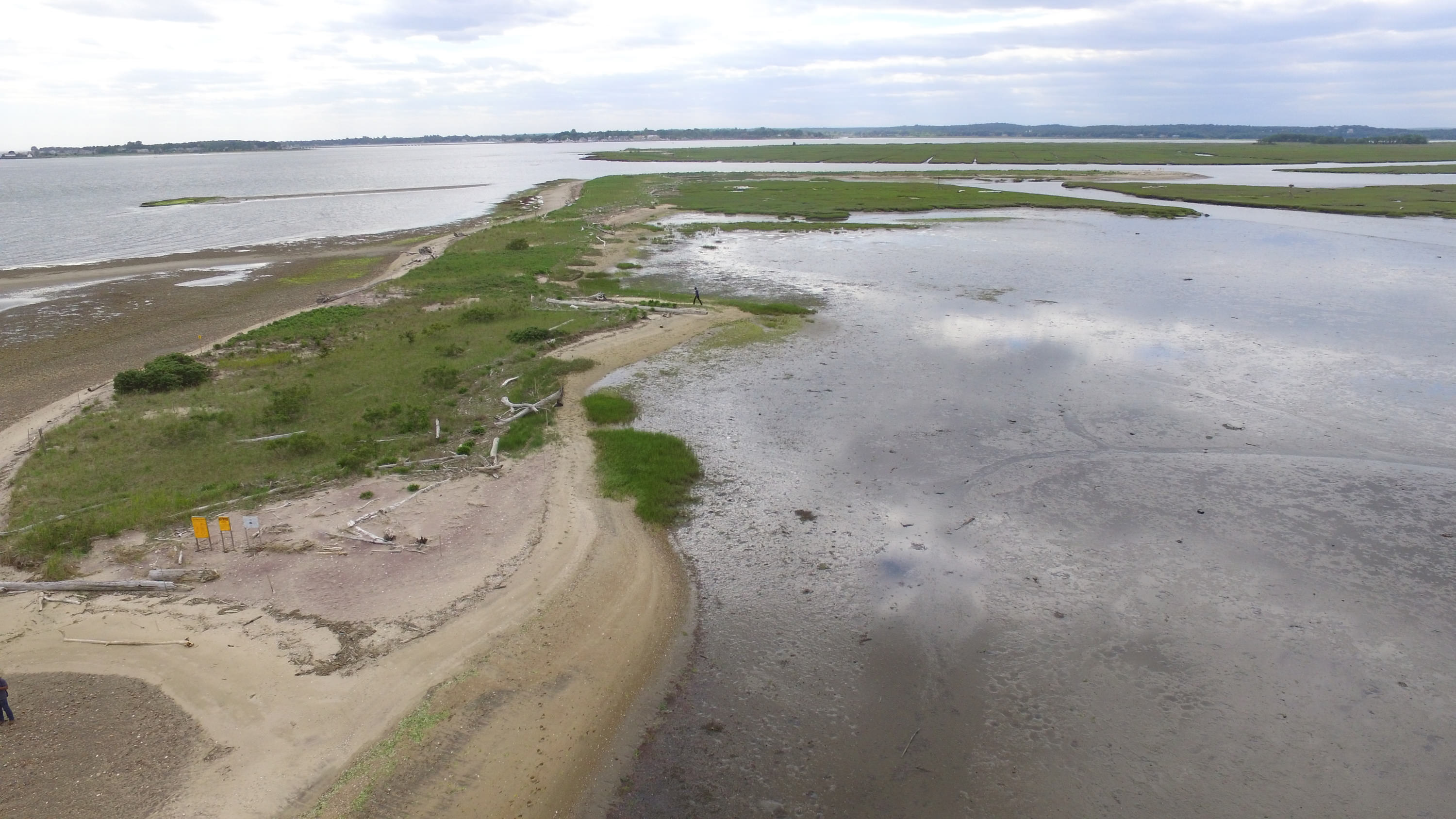
April 2024
Time is ticking on climate action.
The Nature Conservancy and supporters in Connecticut have been asking Governor Lamont for a special session to pass the climate omnibus bill. TNC has been urging representatives to complete the work this summer—let’s not go another year without any major climate legislation being passed!
Connecticut’s climate omnibus bill (HB 5004) didn’t come up for a Senate vote before the end of the regular legislative session, despite being passed in the House. Call Governor Lamont’s office today to voice your support for the special session at 860-566-4840, ext. 1. You can also email his office at governor.lamont@ct.gov.
The state’s greenhouse gas emissions are trending upwards, and the growing costs of rising temperatures and extreme weather events are impacting our communities. Nature, Connecticut residents and our economy cannot wait another year for progress. The clock is ticking!

September 2024
Renowned marine biologist, Dr. Ayana Elizabeth Johnson, joined The Nature Conservancy for Nature Talks.
We were thrilled to be joined by Dr. Ayana Elizabeth Johnson for Nature Talks at the Branford House on University of Connecticut's Avery Point campus in Groton. Along the beautiful and poignant backdrop of the Connecticut coastline, Johnson engaged in conversation with The Nature Conservancy’s director of climate and strategic initiatives, Sally McGee and moderator Rachael Jay, about our relationship with the ocean and the power we have to save it.
According to Dr. Johnson, voting, protesting, donating and lowering our carbon footprints does help. However, to ease the current climate crisis, she invites us to harness our individual talents—“our superpowers”—to create the radical changes we need. We invite you to watch the recording in case you missed it!

December 2025
Why Culverts Count: Building Resilient Waterways in Connecticut
When we think about climate resilience, culverts aren’t usually top of mind. Yet these small structures are vital for healthy waterways, wildlife movement and flood prevention. That’s why The Nature Conservancy recently hosted a two-day North Atlantic Aquatic Connectivity Collaborative (NAACC) training led by Scott Jackson of the University of Massachusetts.
Participants visited culverts across southeastern Connecticut to learn how to assess crossings for aquatic organism passage and earned certification in three protocols: non-tidal, tidal and culvert condition. Representatives from TNC in CT, CT DOT, CT DEEP, Save the Sound, CT National Estuarine Research Reserve, Town of Groton, SECOG and Audubon joined the training.
Funded by a $384,200 grant from the National Fish and Wildlife Foundation, in partnership with the Long Island Sound Study and U.S. EPA, this project—Building a Coastal Crossings Inventory to Evaluate and Prioritize Fish Passage Efforts—will help practitioners assess culverts within the Long Island Sound Coastal Watershed Boundary.
Culverts support natural stream flow, enable fish migration, reduce erosion and strengthen flood resilience. This training is the first step toward creating a comprehensive inventory to guide future restoration. Every culvert counts. By improving crossings, we’re helping waterways flow freely, wildlife thrive and communities prepare for climate challenges.
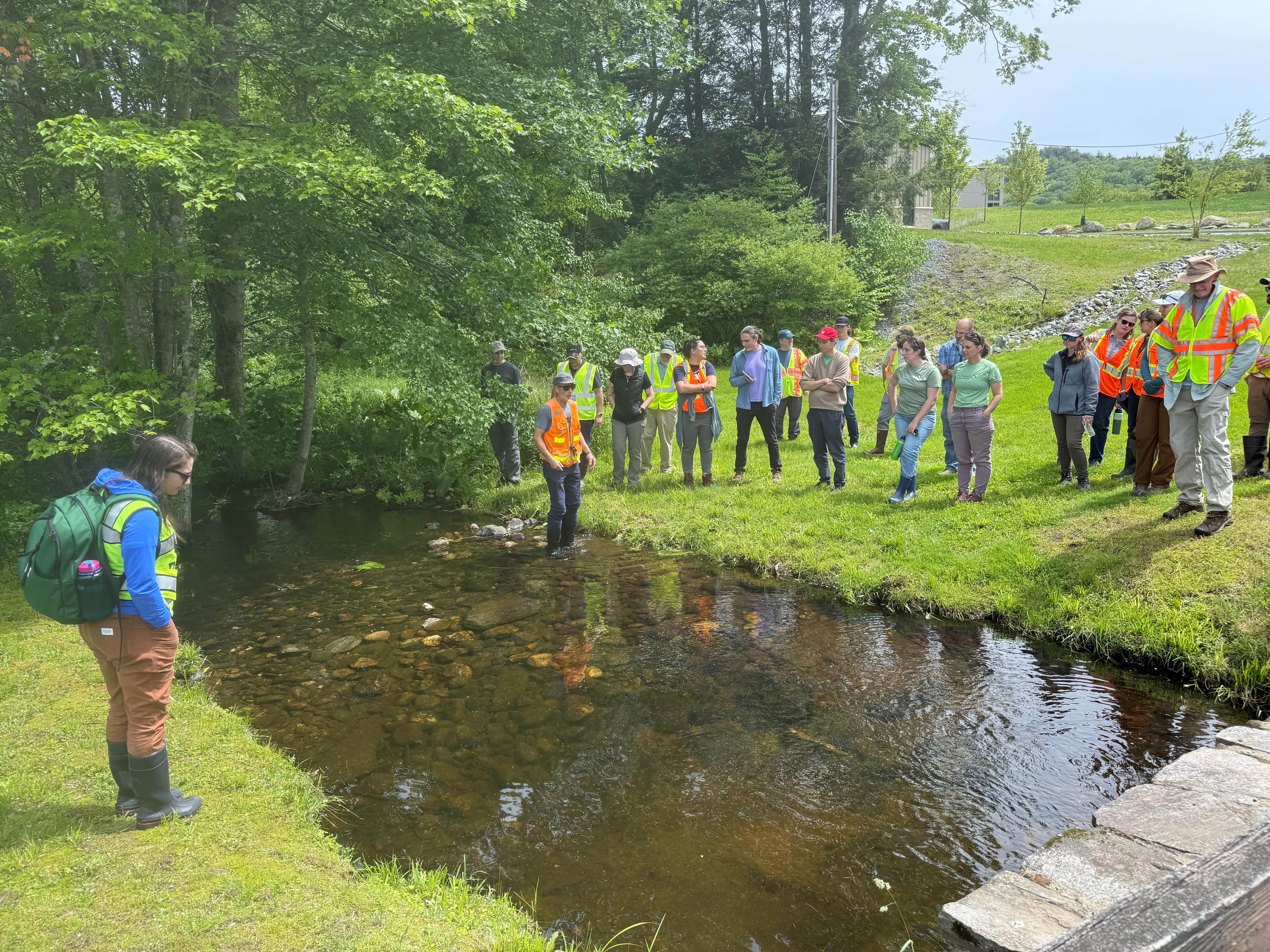
May 2025
Full Stream Ahead! Stream Smart Training flows flawlessly.
The Nature Conservancy, alongside state and community partners, hosted a Stream Smart Training on improved culvert design this spring at Black Rock State Park in Watertown. We often see these structures allowing roads to pass over waterways like streams—but they can be vulnerable in big storms and impact fish movement.
At the training, a demonstration stream table (built by Wayne Woodard, director of TNC’s Sunny Valley Preserve) showed on a miniature scale how different types and sizes of culverts can react in heavy storms. Improved designs can help mitigate flooding, maintain a thriving habitat, and allow wildlife to travel along the waterway. With escalating threats of extreme weather, culverts that work with nature can bring many benefits.
“There’s no point in fighting nature. Nature wins,” said a training participant.
TNC will also be conducting an inventory assessment of culverts in the Long Island Sound Coastal Watershed Boundary through a grant to determine which may be in need of support.

March 2025
Register for the Long Island Sound Summit
Registration is open as of March 1st for a spring 2025 event, co-hosted by The Nature Conservancy, that will premiere a new docuseries about Long Island Sound.
The 2025 Long Island Sound Summit and 4-part video series will highlight water pollution issues and solutions being pursued by local organizations and municipalities. The Summit is set for Thursday, March 27, from 11 a.m. to 2:45 p.m. at Housatonic Community College in Bridgeport. We expect participants from Connecticut and New York. A $25 registration fee includes lunch and refreshments.
Coordinated by the Long Island Sound Coastal Watershed Network, this event is funded by the Long Island Sound Study Futures Fund and organized by TNC in partnership with Save the Sound and Citizens Campaign for the Environment. The Network hopes the docuseries and summit will educate and inspire more people in this coastal watershed to participate in the critical work of restoring and protecting our lands and waters for a cleaner, healthier Long Island Sound.
Maybe you’ve previously joined a beach clean-up, already know lots about lobsters, or looked into bacteria loads over the years, but you’ll feel even more protective of The Sound once you attend and tune in! Contact Melissa DeFrancesco for more information.
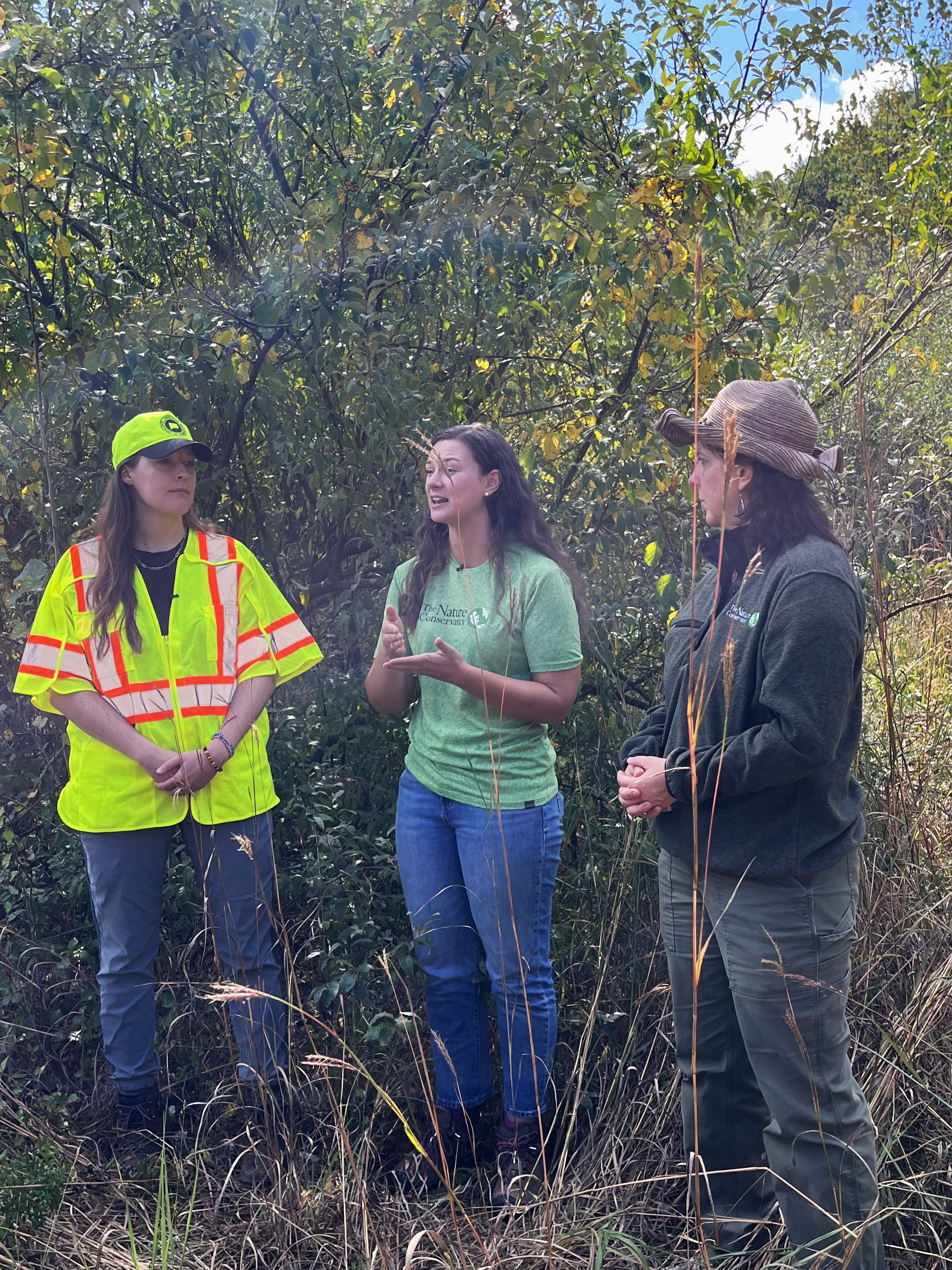
January 2025
A New Grant Will Boost Fish Passage in Long Island Sound
The Nature Conservancy has been awarded a $384,200 grant from the National Fish and Wildlife Foundation, in partnership with the Long Island Sound Study and the U.S. Environmental Protection Agency.
Long Island Sound, the second-largest estuary on the East Coast and one of North America's most biologically diverse, will benefit from this funding, and so will nearby residents and wildlife. TNC will use the grant to inventory crossings—such as culverts and bridges—that often create barriers for fish passage within the Long Island Sound Coastal Watershed Boundary in Connecticut. It’s important to know where they are because there are more than 4,600 culverts just within this area, and more than half of the state’s culverts aren’t mapped at all. The project will train practitioners in North Atlantic Aquatic Connectivity Collaborative protocols as well.
Reconnecting rivers takes teamwork. This "Building a Coastal Crossings Inventory to Evaluate and Prioritize Fish Passage Efforts" project, led by TNC's Connecticut Freshwater Restoration Project Manager, Emily Hadzopulos, will also establish a joint effort among eight community organizations and agencies to adopt a coordinated approach to assessing fish passage in the state.
This grant is part of the 2024 funding round for the Long Island Sound Futures Fund, which announced 31 awards totaling $24.7 million, including matching contributions from grantees.

July 2025
Behind the Bridge: A Day with TNC's Seasonal Stewards at Rock Spring Preserve
Over the past month, our stewards have been hard at work deep in Rock Spring Preserve, constructing two new footbridges to improve access along the river. With no vehicle access, every piece of lumber and tool had to be carried a mile into the woods—an hour round-trip—just to make these crossings safer for all of us.
They’ve also cleared over 50 fallen trees from the trails, making the preserve more accessible for everyone who comes to enjoy it.
As one steward, Nathan, reflected: “When I was younger, I didn’t think about how the rocks in a brook got there—I thought they just happened to be placed perfectly to cross over the water. Now I know someone dug them up, carried them, and placed them with care.” That’s the kind of quiet, thoughtful work that makes our wild places feel welcoming.
Next time you cross a bridge or step over a stream, take a moment to think about the hands that made it possible.
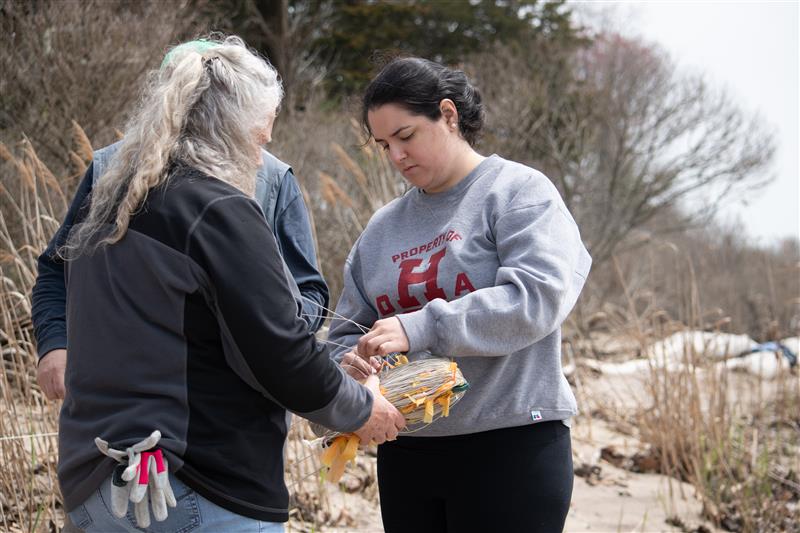
April 2025
Setting up String Fencing on Earth Day
As the weather warms, you’ll spot a new addition to Connecticut beaches: string fences that protect nesting areas of shorebirds.
This April on Earth Day, volunteers and staff from The Nature Conservancy joined with the Connecticut Department of Energy and Environmental Protection and Audubon Connecticut to set up the fencing along the coast at Griswold Point in Old Lyme. The temporary structure safeguards shorebirds and their eggs in the sand—since they’re nearly impossible to notice when walking at a beach.
TNC has completed the work for decades in partnership with the Audubon Alliance for Coastal Waterbirds. Volunteer Steve Olshewski has joined in for years.
TNC: How many times have you come here to help?
Steve: I’ve been out here over the years maybe 6 to 10 times. I’ve also done beach clean-ups, and last week I helped remove some driftwood sculptures where the piping plovers might be nesting. Today we’re putting up the seasonal string fence and signs, keeping the area safe for the plovers to nest.
TNC: How did you become interested in helping with this work?
Steve: I love the outdoors. I love the ocean. I love nature. I've actually come down here for years kayaking a little bit. I love the Connecticut shoreline and I love helping out. Griswold Point has very good habitat for the piping plovers and the other shorebirds. And it's really nice to get out here and do some volunteer work for The Nature Conservancy.
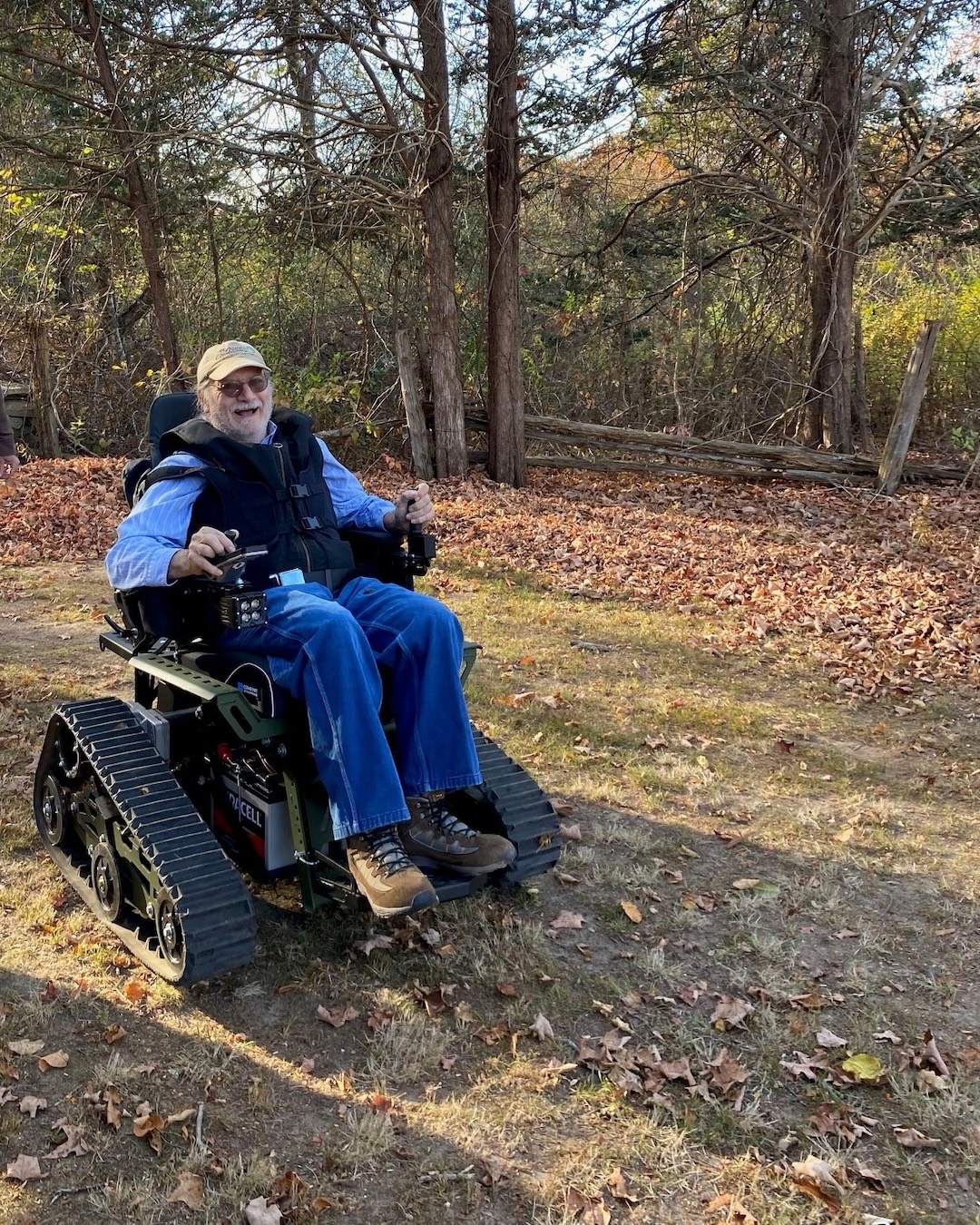
November 2024
Nature Without Limits: Burnham Brook's New All-Terrain Wheelchair
We are thrilled share that our Burnham Brook Preserve has a new all-terrain wheelchair that makes the preserve accessible to more visitors. To make this happen, The Nature Conservancy collaborated with Starr Adventures, owned by Suze and Scott Trager, on acquiring the All-Terrain Track Chair (manufactured by Action Trackchair). Starr Adventures works with a sister corporation, SOAR, that specializes in outdoor access for people with mobility impairments. With the chair on-site, TNC is working with Starr Adventures on developing a program to ensure that volunteers are present to host visitors who are interested in using the chair.
Since the delivery, TNC’s Dave Gumbart and Martha Rice have hosted friends who require the use of a wheelchair to explore trails at Burnham Brook in order to gather feedback on the All-Terrain Track Chair and the wheelchair-accessible trails. And some reviews are in:
“You have no idea how nice it is to get outside and have this control.” – Deb Lees, after using the chair on the trails
“I can’t wait to come back and experience this at different times of the year.” – David Gephard, after his ride
The all-terrain wheelchair will be available through reservation by Spring 2025.
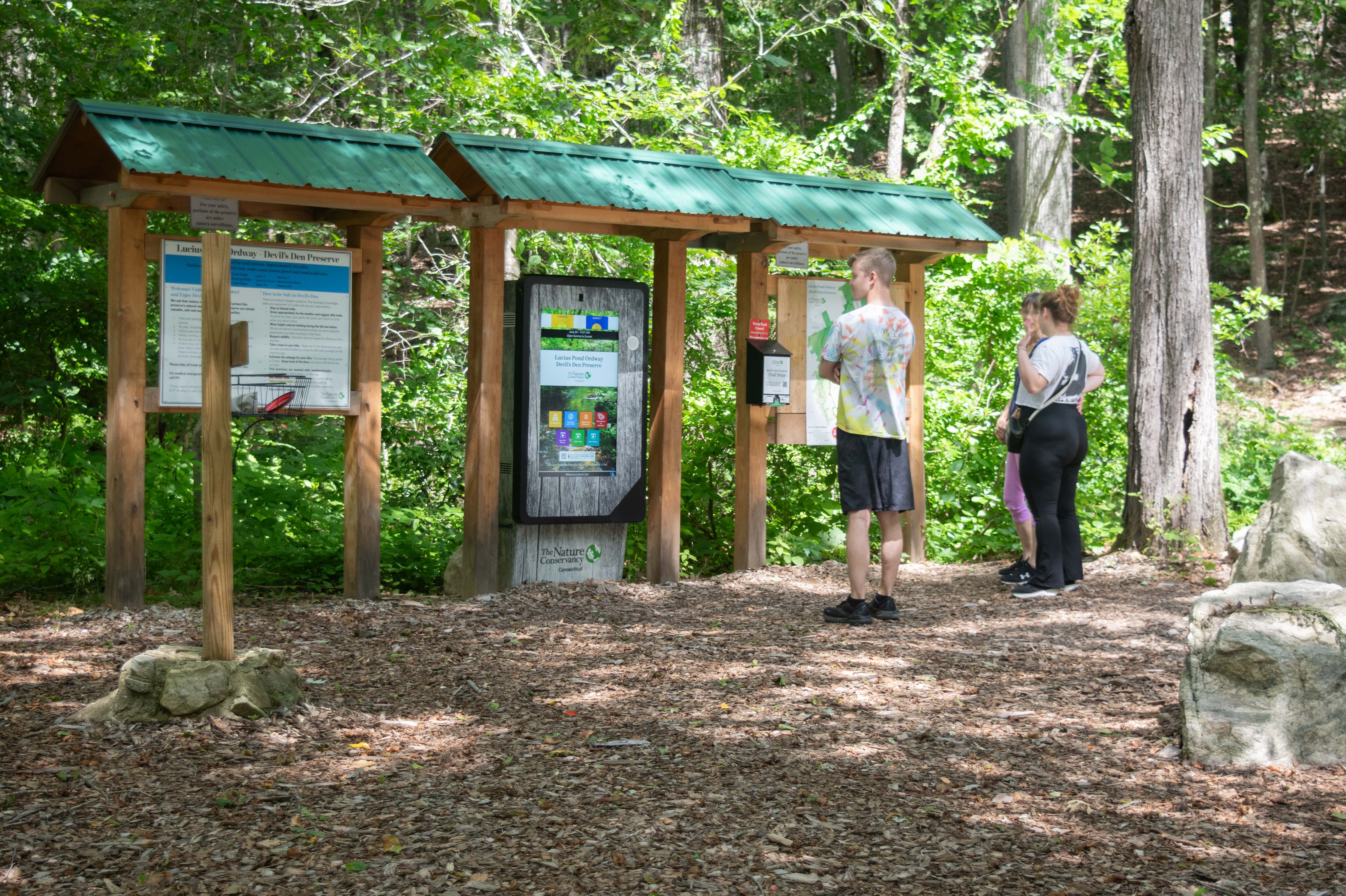
August 2024
A new kiosk awaits visitors to TNC's Lucius Pond Ordway—Devil’s Den Preserve.
At Lucius Pond Ordway—Devil’s Den Preserve, a digital kiosk waits in the parking area for interested hikers who want to learn more about the trails or conservation policies. From digital maps to videos sharing hiking best practices, this tool is a valuable asset for you as a visitor, and for The Nature Conservancy’s Connecticut stewardship team.
A culmination of many team members’ efforts, this kiosk increases TNC’s presence at the preserve. You may see land stewards, but if they are busy, the kiosk is there to fill you in. It heads off safety and conservation concerns, while also offering more in-depth information to help enhance visitors’ experiences.
With one click on the home screen, you are able to change the kiosk language between English and Spanish. Not only does this give you access to trail directions in a different language, but all the informational videos are also subtitled in Spanish to ensure preserve visitors can access all the information available.
Inspired by a kiosk installed by at TNC’s South Cape May Meadows preserve in New Jersey, our Director of Saugatuck Preserves, Cynthia Fowx, brought the idea to life in Connecticut. Our Preserve Visitor Safety and Engagement Specialist, Ben Croll, helped with design and informational videos.
We hope you will check out the kiosk the next time you visit Devil’s Den Preserve. Download a map to your phone, and see how this tool can make your time with nature even more enjoyable!
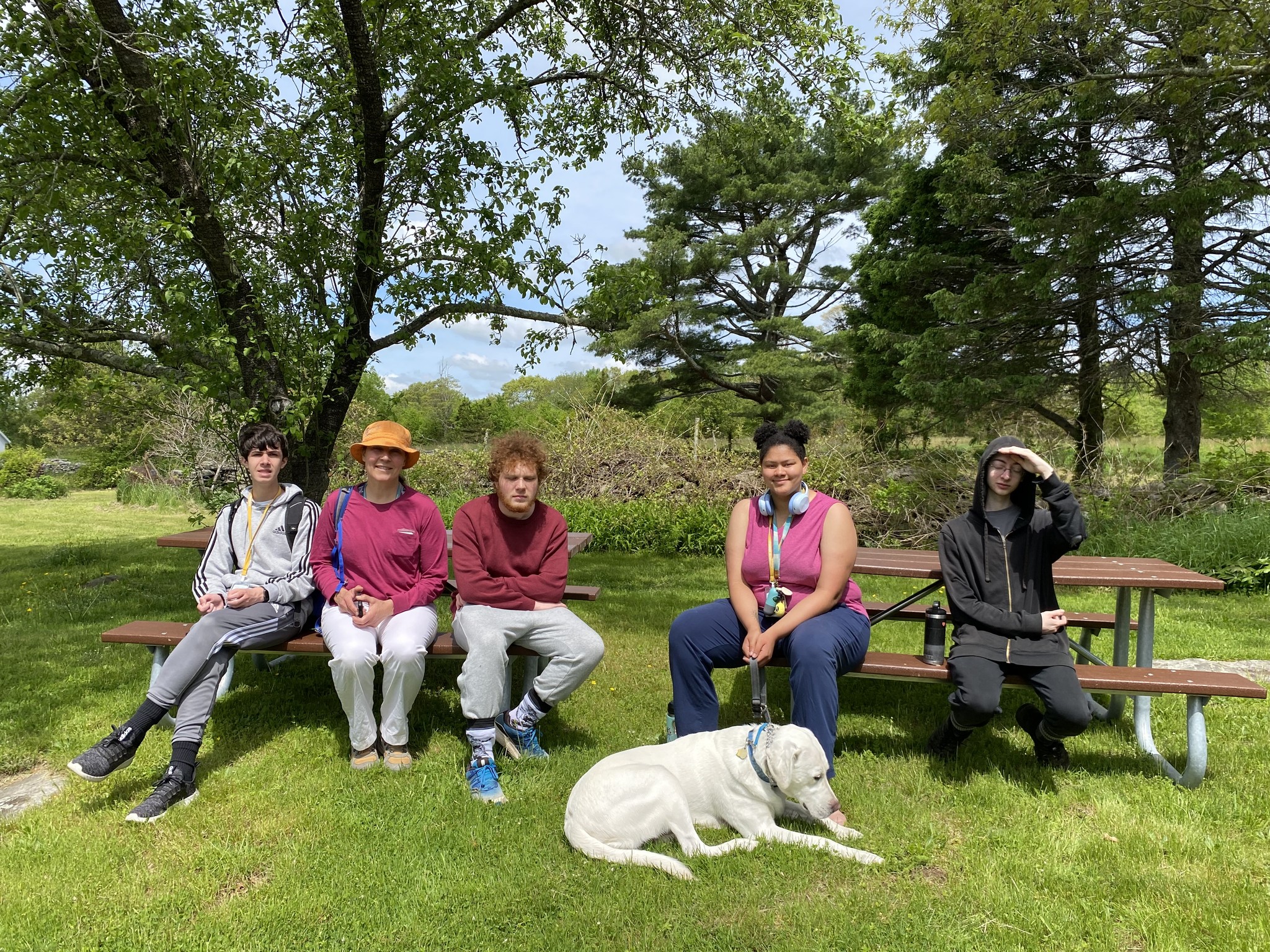
June 2024
Local students forge new paths, through trail building and hands-on training in a conservation career.
Students from Franklin Academy recently joined The Nature Conservancy at Burnham Brook Preserve in East Haddam to help clear a trail. TNC's Connecticut River Preserves Manager David Gumbart showed them how to begin preparing for a new path and about the safe use of hand tools and proper pruning techniques. The group also enjoyed a preserve walk and discussion about how the worlds of conservation and equity, inclusion and access intersect and benefit each other.
Our staff enjoys welcoming the students to help with various projects. Last year, they attended an educational program and guided hike before building bluebird houses as part of a Capstone Project. This partnership is made possible through a grant from the Community Foundation of Middlesex County.
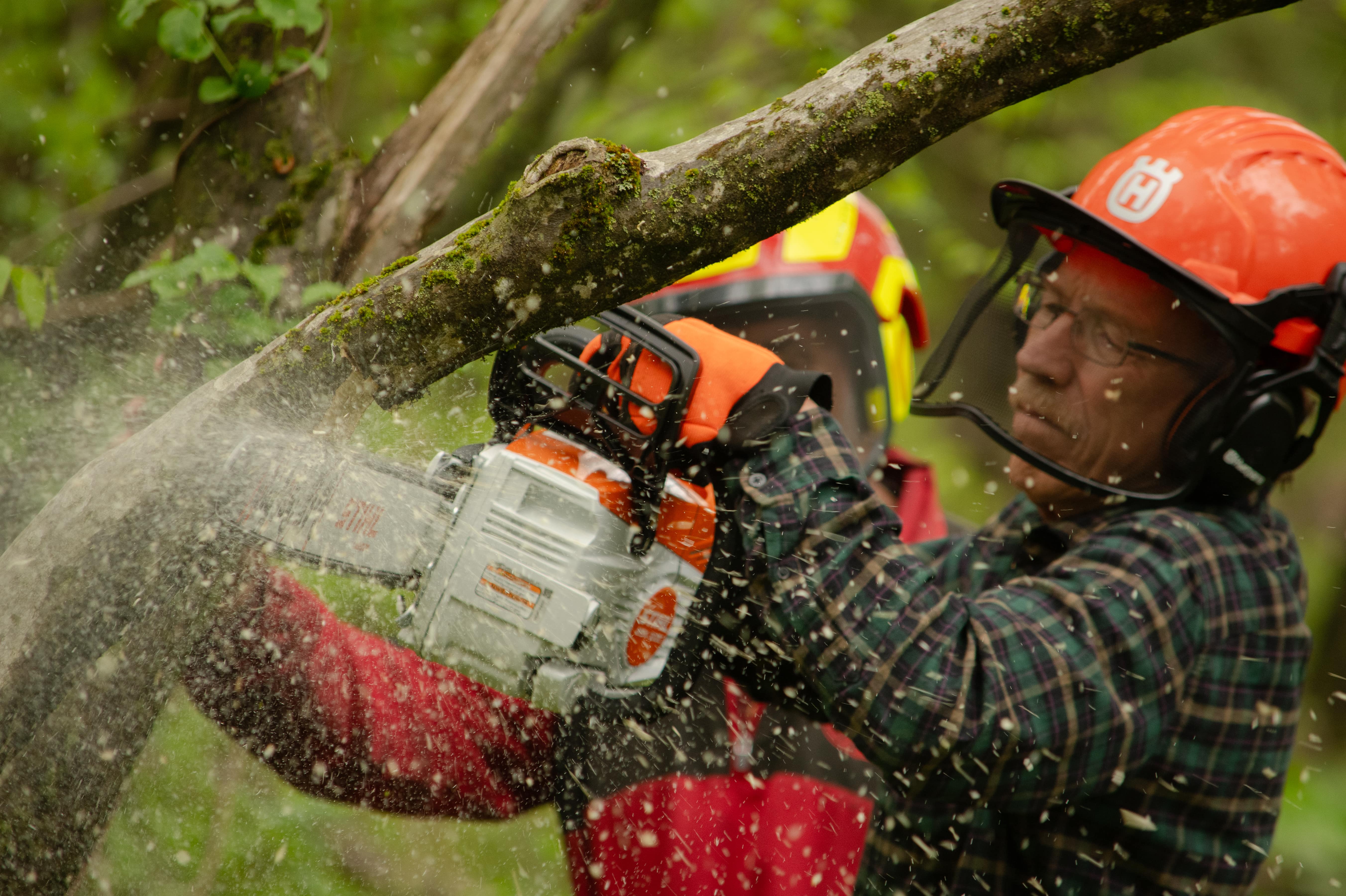
May 2024
They came. They saw. Actually, they chain-sawed.
The Nature Conservancy in Connecticut held a chainsaw workshop this spring, where TNC land stewards sharpened their skills and practiced safe cutting. The team is always prepared for times when storms cause damage, or fallen trees and limbs need to be cleared from trails. From safety checks of chainsaws, to different types of cuts, to laws, regulations and safety gear, TNC staff covered it all with Bill of Game of Logging at our Sunny Valley Preserve.
Sunny Valley Preserve Director Wayne Woodard explained why these workshops are essential, noting “The thing about clearing trails is we have all different types of storm damage. It’s not always simple, like if you just have a simple tree fall across a trail, so we’re learning how to safely come in. As a steward for The Nature Conservancy, we do have trails we maintain, but we also have entrances to maintain, and when we have to go into a piece of property, you just never know when a tree is going to be down, and so it’s all about safety.”

April 2024
Pitching In For Plovers
Volunteers and staff from The Nature Conservancy joined with the Connecticut Department of Energy & Environmental Protection (DEEP) and Audubon Connecticut to set up string fencing along the coast at Griswold Point in Old Lyme to protect piping plover nests. The shorebirds lay their eggs in the sand—and they’re nearly impossible to notice when walking at a beach.
TNC has completed this work for decades—in partnership with the Audubon Alliance for Coastal Waterbirds—particularly at Griswold Point. Volunteers like James Buchanan, Wesley Frank and Steve Olshewski join in every year and are dedicated advocates for shorebirds.
The New London Day also featured the work on the front page of the newspaper.
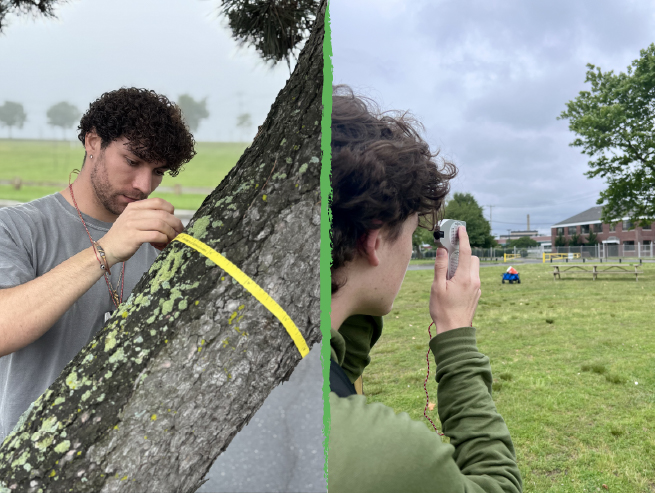
July 2025
New Faces, Greener Places
With summer temperatures already climbing into the 90s across Connecticut, it’s not just the weather that’s heating up—it’s our cities. Thanks to the urban heat island effect, neighborhoods with limited tree cover can be up to 6°F hotter than surrounding areas. These temperature spikes aren’t just uncomfortable—they’re dangerous, especially for vulnerable communities.
That’s why we’re excited to welcome Skyler and Corey as temporary members of TNC in CT this summer through the Yale Conservation Scholars program. Their work will focus on urban forestry initiatives—a critical effort as communities look to cool neighborhoods, improve air quality, and build climate resilience.
“Coming from both rural Alabama and the urban streets of Los Angeles, I believe that urban forestry is the vital green infrastructure that our country’s cities need,” Corey said, “not only beautifying our grey, urban landscapes but also providing necessary environmental and community well-being benefits.”
Skyler and Corey will help with a tree inventory in Bridgeport (shown above) to expand the urban forest and transform how it’s managed, and head to New London and New Haven as well.
“From cooling city streets to creating wildlife habitat, urban forestry is precisely the kind of integrated, impactful conservation work I hope to contribute to,” Skyler added. “I’m most excited to be out on the ground around CT, learning and working with community members to make cities better for people and nature alike.”
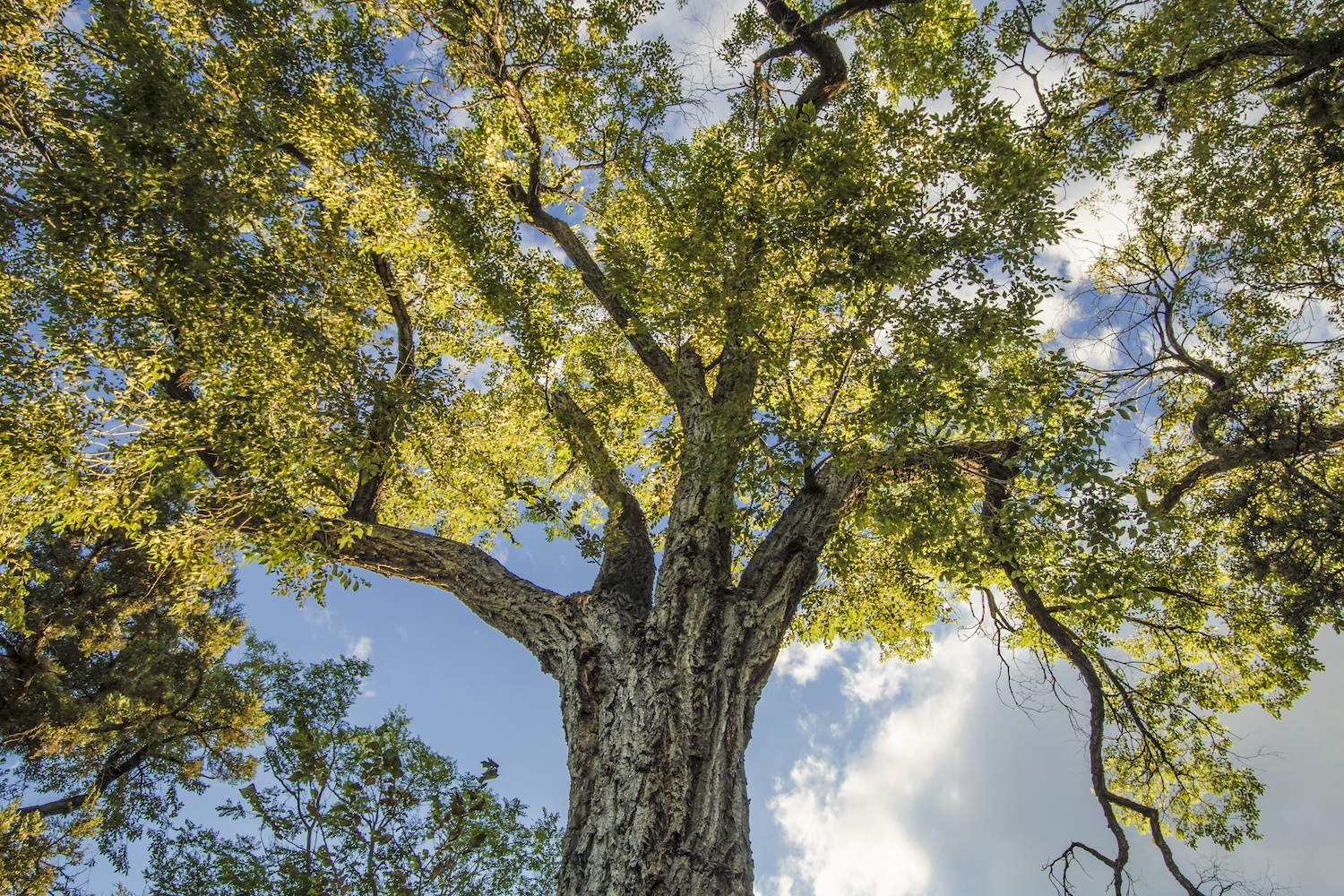
June 2024
An Extreme Start To Summer—Especially in Cities
June’s heat wave gave everyone across Connecticut a sudden and extreme start to summer. But cities faced an extra challenge: the “heat island effect.”
Drew Goldsman, The Nature Conservancy's urban conservation director in Connecticut, discussed the issue and its impact with News 8, Channel 3, NBC CT and Fox 61.
Urban heat islands occur when a large percentage of an area’s surface includes pavement and buildings rather than green space and trees. It can feel warmer in cities because these surfaces retain heat—and amplify and re-radiate that heat at the end of the day, Goldsman says. And because there can be fewer trees and greenery in cities, you don’t have the cooling effect that trees can provide through evapotranspiration.
The heat island effect increases energy costs, air pollution levels and heat-related illness and mortality.
It's one of the reasons why initiatives like the Connecticut Urban Forest Network for Equity and Resilience—which TNC will launch here in Connecticut—are so important for the overall well-being of our communities.
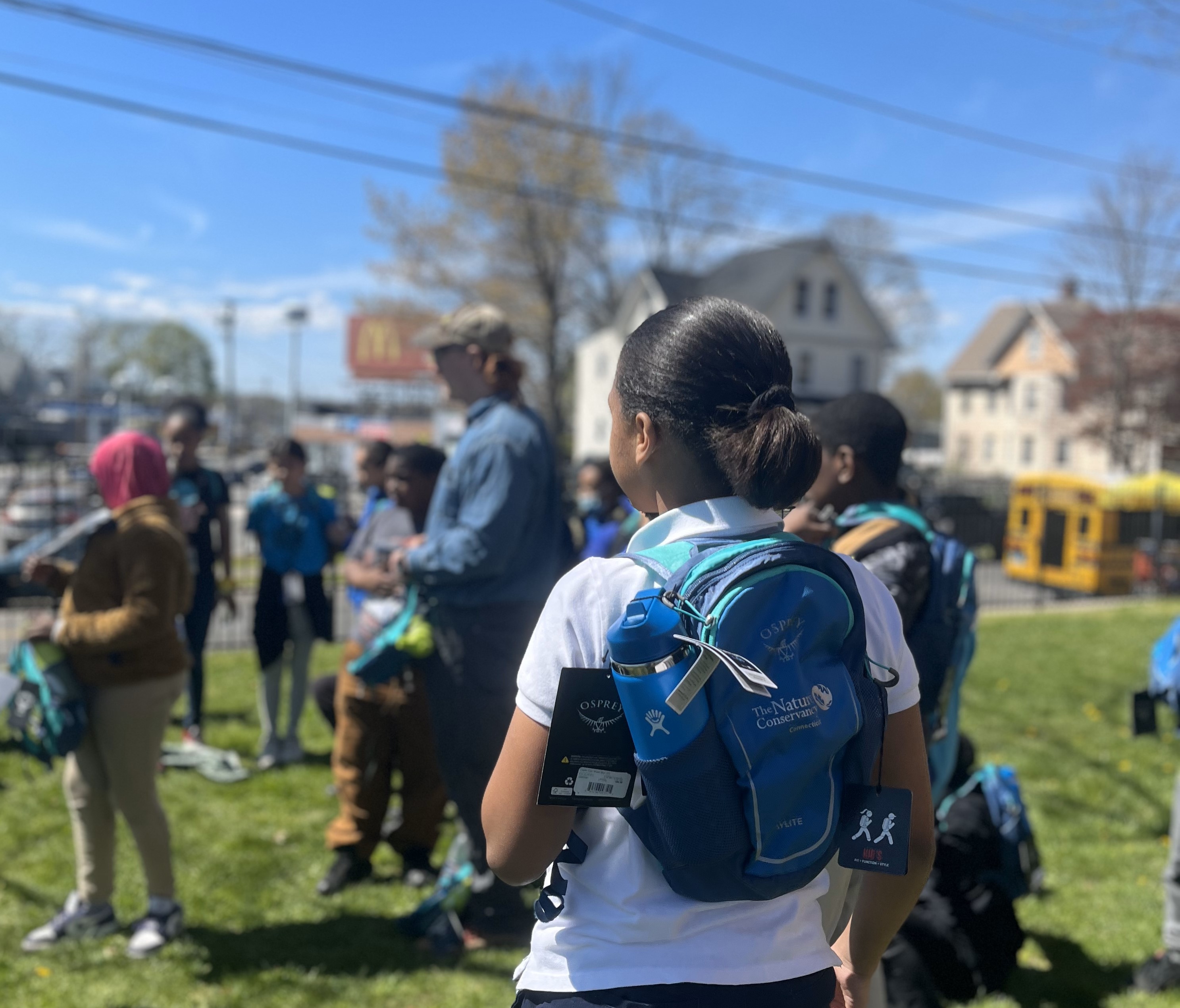
April 2024
Bridgeport students receive a special delivery.
Students at Beardsley School in Bridgeport recently took home a different kind of backpack—ones that were filled with supplies for spending time in nature.
Thanks to a donation from Milford-based Athletic Brewing Company, The Nature Conservancy visited the school and delivered Osprey Packs that held Hydro Flasks, rain notebooks, crayons, bandanas with animal track patterns, a compass and more. Ben Croll, Preserve Visitor Safety and Engagement Specialist at TNC's Devil’s Den Preserve, showed students how to use the tools and led outdoor activities under a bright blue sky.
Both TNC and the students are grateful to Athletic Brewing for its generosity and helping kids to explore, connect with the outdoors, and be curious.
Thanks to your support, The Nature Conservancy protects critical lands and waters in Connecticut.
More Connecticut Stories
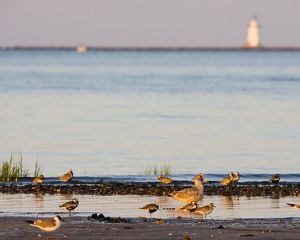
Long Island Sound Program
The Nature Conservancy works across three states to protect and restore the Long Island Sound for people and nature.
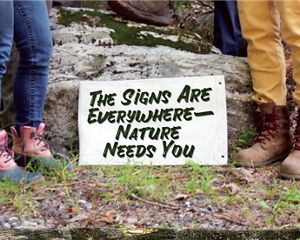
Connecticut Annual Report
The Nature Conservancy features conservation wins achieved in Connecticut during 2024.
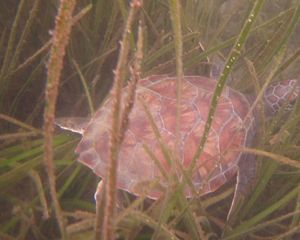
Protecting Seagrass In Long Island Sound
We know why a critical habitat is in decline; now we’re trying to save it.